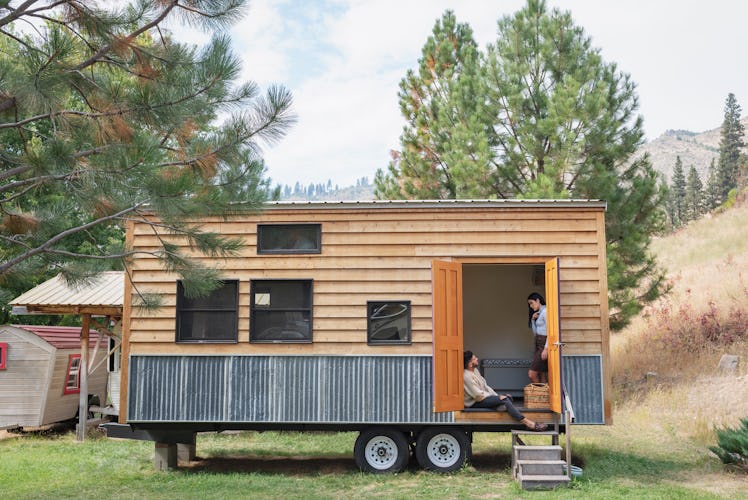Here's How Much Smaller A $500K Home Is Now Versus Just 5 Years Ago
Shrinkflation has hit the housing market hard, new data reveals.

The housing market is bonkers right now. The pandemic launched a home-buying frenzy and buyers were lucky enough to luck into record low interest rates. Now, record high housing costs, very high interest and mortgage rates, and low housing stock have led to an untenable situation. The average cost of a new house has risen significantly, while available homes for purchase are decreasing since homeowners are opting to stay put. All of that means that your dollar gets you much less far in today’s housing market — even compared to just five years ago, according to a new report comparing what a $500,000 home looks like now versus five years ago.
The new study from BuilderPad.com found that not only are home prices increasing, but what you’re getting for your dollar is decreasing. Indeed shrinkflation, a term usually used to describe the shrinking packages of consumer goods sold at grocery stores, not the homes we put those things in, has hit the housing market. According to the site, the average cost per square foot in a home has increased in every state across the country over the past 5 years.
“The team found that in some states, home buyers are only able to afford half as much house with a 30-year fixed mortgage compared to the housing market prices in 2018,” BuilderPad.com notes. In fact, according to their data, the average price per square foot of houses in the U.S. increased by an astounding 61% over five years ago, from $150.78 to $243.14.
“If the median square footage of single-family homes in the U.S. in 2023 is 2,191 square feet, then the average home price in the U.S. would amount to $532,700,” BuilderPad.com states.
Given the average home price in the U.S. is around $500,000, there are some starting statistics BuilderPad.com found when it comes to how much you’re getting now for your money versus five years ago.
The state that has lost the highest percentage of square feet over the past five years — over 50% — is Montana. New York comes second, and has become 46.85% smaller in five years. Meanwhile, Maine, Tennessee and New Hampshire round out the top five losing 45.28%, 45.22%, and 44.6% of their square footage respectively.
And while, yes, every state has been subject to this square footage contraction, not every state has been so effected. Maryland, for example, has only lost 22.42% of its square footage for a $500K house — still significant, but the “least” loss in any state over the past five years. Louisiana — 23.53%, North Dakota — 25.83%, Connecticut, 27.35%, and Hawaii, 27.46%, round out the bottom five.
But in terms of raw data, percentage isn’t everything. Even though Montana lost the highest percentage of square feet per $500K house, in terms of raw square feet, Kansas won out hard — losing over 2,280 square feet in the past five years. Indiana lost 2,101, Oklahoma, just under 2,000, Arkansas, 1,886 and Alabama, 1,815.
The state that lost the least in terms of raw square footage is Hawaii — which only lost 273 square feet. Meanwhile, California lost over 500, Maryland, just under 650, Rhode Island, 653, and Oregon, 729.
The shrinkflation of the housing market isn’t the only thing that’s changed in the last five years. Houses aren’t just smaller. The income of the typical home buyer is larger: CNN reported that the the typical income for a homeowner in the U.S. has jumped from $88,000 in 2022 to $107,00 this year. It’s a historic 22% jump year-over-year, and it prices out the average family in the U.S., where the median income is $75,000.
Nevertheless, despite smaller homes, high interest rates, and harder barriers for entry to the housing market, first-time home buyers made up 32% of all homebuyers this year — a good jump from last year’s 26%. And the average age of a first-time homebuyer is now 35 years old, a slight bump from last year's 36. The average age of a repeat homebuyer is also slightly better, seeing the same one-year jump from 58, down from the all-time high last year of 59, per CNN.
58 is still misaligned with the need out there. Most homebuyers right now are not families with young children, with 70% of recent buyers having no children under 18 in the home. That’s despite the fact that most households have a child under 18. For parents in need of more space, something in this shrinkflating housing market’s gotta give.
To read more, check out BuilderPad’s full report.
This article was originally published on